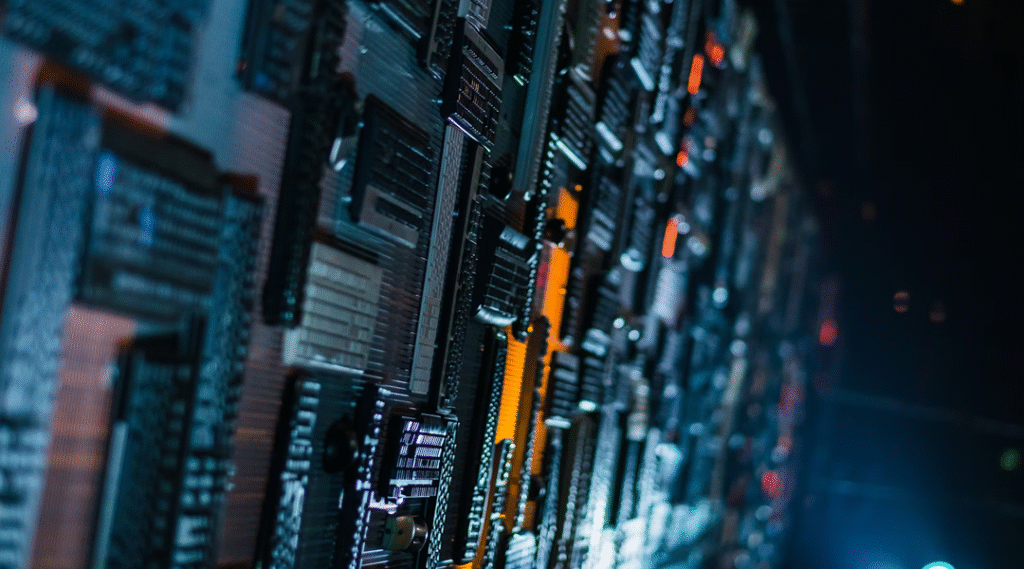In an era where data is the most valuable commodity, securing the facilities that house and process that data is paramount. Data center security has evolved from simple locks and guards to a sophisticated, multilayered discipline that integrates physical barriers, advanced monitoring, and cutting‑edge cybersecurity measures. This article explores the dual realms of physical and cyber protection, the ways they intersect, and the best practices that operators must adopt to stay one step ahead of threats.
Physical Security: The First Line of Defense
Physical security remains the foundational element of data center protection. Modern facilities employ a “defense‑in‑depth” strategy, layering multiple controls to deter, detect, and delay unauthorized access:
- Perimeter Controls: Fencing, bollards, and crash‑rated barriers are often the first obstacles an intruder encounters. Vehicle‑stopping bollards at gates prevent ram‑raid attempts, while gated entries restrict pedestrian access.
- Access Management: Multi‑factor authentication at entry points is standard. Visitors and personnel typically pass through mantraps—small chambers with interlocking doors—requiring electronic badges or biometric scans (fingerprint, iris) to proceed. Surveillance cameras with 24/7 monitoring cover all ingress and egress points, feeding video analytics platforms that can automatically flag suspicious behaviors.
- Environmental Protections: Fire suppression systems (e.g., inert gas, FM‑200) and water detection sensors protect hardware from accidental damage. Redundant power feeds, UPS systems, and generators ensure that physical threats coupled with environmental failures don’t lead to data loss or downtime.
By integrating these layers, data centers create a hardened perimeter that not only prevents unauthorized site entry but also ensures rapid response to emergencies—be they intrusion attempts, fires, or environmental deviations.
Cybersecurity: Shielding the Digital Assets
While physical measures protect hardware, cybersecurity safeguards the digital crown jewels—applications, virtual machines, and stored data:
- Network Segmentation: Data centers segment internal traffic using firewalls and virtual LANs to isolate critical systems. Zero‑trust architectures go further, requiring authentication for every connection, regardless of network location.
- Intrusion Detection and Prevention: IDS/IPS solutions monitor network flows and server logs in real time, using signature‑based and behavioral analytics to identify and block malicious activity. Machine learning models increasingly detect novel attack patterns that traditional tools might miss.
- Patch Management and Hardening: Servers, hypervisors, and networking gear must be regularly updated to address newly discovered vulnerabilities. Hardening guides (e.g., CIS Benchmarks) provide standardized checklists to remove unnecessary services and tighten configuration settings.
- Data Encryption: Both data at rest (via AES‑256 encryption) and data in transit (via TLS 1.3) should be protected. Encryption key management platforms ensure keys are securely generated, stored, and rotated without human intervention.
- Identity and Access Governance: Role‑based access control (RBAC) limits permissions to only those needed for specific tasks. Privileged Access Management (PAM) solutions vault credentials and enforce just‑in‑time access to critical systems.
Cybersecurity measures must be as dynamic as the threats they confront; continuous monitoring, automated response playbooks, and regular red‑team exercises help data centers stay resilient against intrusion attempts, malware outbreaks, and insider threats.
Convergence: Bridging Physical and Cyber Security
The convergence of physical and cyber security—often termed “converged security”—recognizes that threats don’t respect silos. For example, tailgating through a mantrap can lead to a malicious actor plugging in an infected device. Conversely, a ransomware attack may aim to disable security cameras to conceal physical tampering. Integrated security operations centers (SOCs) now aggregate logs from badge readers, video analytics, network firewalls, and host‑based sensors into unified platforms, enabling holistic threat detection and coordinated incident response.
Regulatory Compliance and Industry Standards
Data center operators must navigate a web of regulations and standards that mandate specific security controls:
- ISO/IEC 27001 provides a framework for an information security management system (ISMS), covering risk assessment, asset management, and incident handling.
- SOC 2 Type II audits validate that security, availability, processing integrity, confidentiality, and privacy controls are properly designed and operational.
- PCI DSS applies to centers handling payment card data, requiring strong encryption, access logging, and vulnerability management.
- Government Data Sovereignty Laws (e.g., GDPR, HIPAA) impose strict data residency and breach notification requirements.
Adherence to these standards not only mitigates legal and financial penalties but also enhances customer trust by demonstrating a commitment to best‑in‑class security practices.
Best Practices and Emerging Trends
- AI‑Driven Threat Hunting: Leveraging artificial intelligence to uncover stealthy intrusions and anomalies across massive data logs accelerates detection and reduces false positives.
- Biometric and Behavioral Authentication: Beyond fingerprints and iris scans, emerging solutions analyze typing patterns, gait, and even heartbeat to continuously authenticate operators.
- Micro‑Segmentation and Software‑Defined Perimeter (SDP): These techniques create ephemeral, encrypted connections between workloads, dramatically shrinking the attack surface.
- Immutable Infrastructure: By deploying servers from read‑only, version‑controlled images, data centers ensure that unauthorized changes are immediately rolled back.
- Supply Chain Security: With hardware and software often sourced globally, verifying provenance and integrity through digital signatures and blockchain‑based tracking is gaining traction.
Adopting these practices helps data center operators anticipate next‑generation threats and maintain a security posture that can evolve as rapidly as the technologies they support.
Final Thoughts
Data center security is a multifaceted discipline that demands rigorous attention at both the physical and cyber layers. By implementing layered defenses, converging security operations, adhering to stringent standards, and embracing emerging technologies, operators can build resilient facilities capable of withstanding the full spectrum of threats. In a world where data drives business—and increasingly, society—robust security is not optional; it is the very bedrock upon which digital innovation stands.
All articles on this special edition-DATA CENTER:
(#1) Inside the Digital Backbone: Understanding Modern Data Centers
(#2) From Vacuum Tubes to Cloud Campuses: The Evolution of Data Center Architecture
(#3) From Servers to Coolant: A Deep Dive into Data Center Core Components
(#4) Harnessing Efficiency: Overcoming Energy and Sustainability Hurdles in Data Centers
(#5) Cooling Innovations Powering the Next Generation of Data Centers
(#6) Safeguarding the Core—Data Center Security in the Physical and Cyber Domains
(#7) Decentralizing the Cloud: The Rise of Edge Computing and Micro Data Centers
(#8) Data Center: Cloud, On-Premises, and Hybrid Infrastructure
(#9) Intelligent Data Center Management and Automation
(#10) Market Landscape and Key Players in the Data Center Industry
(#11) Navigating Regulatory, Compliance, and Data Sovereignty in Modern Data Centers
As for in-depth insight articles about AI tech, please visit our AI Tech Category here.
As for in-depth insight articles about Auto Tech, please visit our Auto Tech Category here.
As for in-depth insight articles about Smart IoT, please visit our Smart IoT Category here.
As for in-depth insight articles about Energy, please visit our Energy Category here.
If you want to save time for high-quality reading, please visit our Editors’ Pick here.



